.
Dutch Baroque
Rembrandt
van Rijn
(1606-1669)
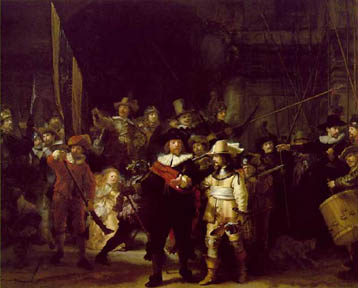
Rembrandt, "The
Nightwatch", 1642
(The Civic Guard of Captain Cocq)
|

Self Portrait
1659
|
The Nightwatch is one
of Rembrandt's most famous paintings, and marks a turning point in the artist's
career. He was at this time the most famous (and wealthy) artist in Holland,
but personal circumstances would soon alter his fate. Though he created
images of many subjects, it was primarily as a portrait painter that he
gained his notoreity. Anyone who had the means wanted the great artist to
create their portrait, so most which he created were of members of the new
upper class. He had many pupils who helped him to keep up with his unending
commissions. Rembrandt had acquired a huge estate full of prescious objects
and a large art collection. In 1642, however, his beloved wife, Saskia,
died, leaving the artist with a newborn son, Titus (his other 4 children
died previous to her death). A woman named Hendrickje Stoffels was taken
in to his house to care for his son, and she became Rembrandt's common-law
wife. She died in 1663,however, followed by his son in 1669. Left alone,
Rembrandt's poor skills at financial management required him to sell off
his estate to pay his creditors. With his advancing years, he was less and
less interested in painting for the upper class, and many of his best paintings
are his self portraits, portraits of loved ones, and those of religous subjects.
Throughout his life, Rembrandt created nearly 100 self portraits. These are,
in my opinion, some of his most expressive paintings, and a great documentary
of the changes in his psychological life. It is easy to see his life biography
reflected in his countenance. Beginning in his youth, he appears brash and
confident. You then see the bearing of his wealth and dignified status emerge.
Towards the middle of his career, his worries begin to show in his face. At
the end, a very sad, yet still dignified elderly man gazes out at the viewer.
Jan
Vermeer
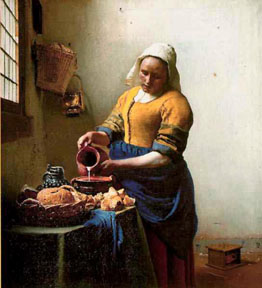
The Milkmaid, 1658
|
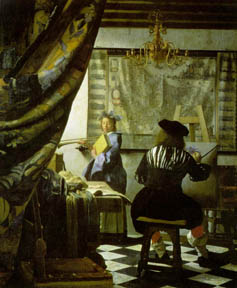
The Art of Painting, 1665
|
Jan Vermeer was
also from Holland, but never ventured from the small town of Delft where he
was born. Unlike Rembrandt, he was not famous during his own lifetime. When
Vermeer died, his widow sold most of his paintings to pay creditors, as she
was left with several children to raise. His genius for creating intimate
compositions based on domestic activities was not even discovered until the
19th century. When an art historian bought one of his works, he made it his
mission to find out more about the artist. Only 35 paintings have been attributed
to Vermeer's hand, yet he is now considered one of the greatest artists of
the Baroque period.
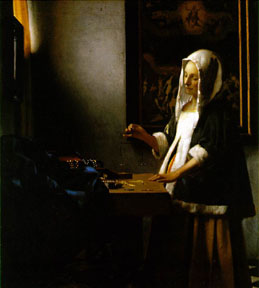
Weighing of Pearls
|
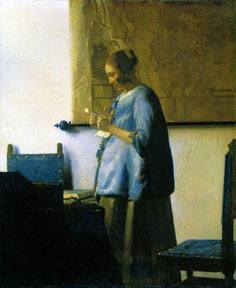
Girl Reading a Letter
|
One of the things that has always
intrigued me about Vermeer's work is the way that light fills the scene,
entering from the left side of the canvas. It makes one wonder if all of
his paintings were created in a corner of the same room. Though his work
is less dramatic than most Baroque artists of his time, there is a certain
quiet drama in each of the paintings. It is through the small acts of everyday
life (genre scenes) that the private drama of the subject's personal
life unfolds.

The Lacemaker,
1671
|

The Love Letter,
1667
|
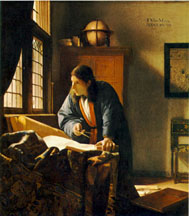
The Geographer,
1669
|
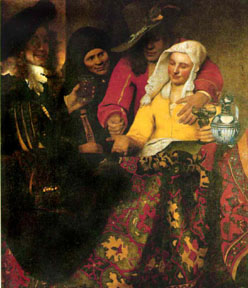
The Procuress, 1656
|
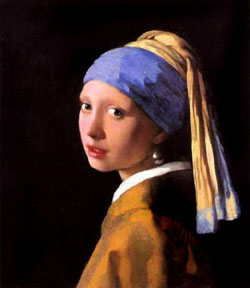
Girl With Pearl Earring,
1665
|
The Girl With Pearl Earring is one of my favorite Vermeer paintings. Though simple in subject, the way
that the woman turns to look at the viewer conveys a sense of immediacy. The
way the light reflects off of her face has an almost photograpic sense of
realism. Her oriental turban and silk garments also remind the viewer of how
the Dutch attained most of their wealth through merchant trade with the east.
Most of Vermeer's paintings focus on a single person, or two people. The
Procuress is an exception, and it is possible that it is not a Vermeer
at all, but a Dutch contemporary. Nevertheless, it tells an amusing story
of a woman who accepts money in exchange for her womanly favors.
Judith
Leyster
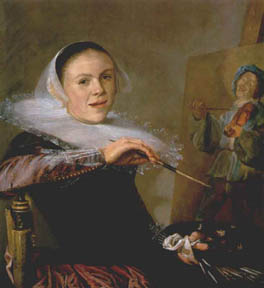
Self Portrait
|
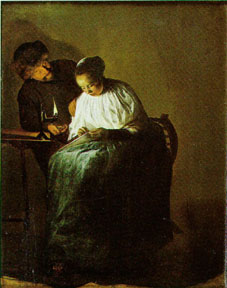
The Proposition,
1631
|
Judith Leyster,
like Vermeer, focused primarily on portraits and genre scenes. It was more
difficult for a woman to set up a studio to receive commissions, but not unheard
of during the Baroque era. Leyster had actually attained a fair degree of
fame during her own lifetime, but was virtually forgotten afterwards. Most
of her paintings had been subsequently attributed to other artists, particularly
to Frans Hals (who is significantly more famous today). Her painting The
Proposition, echos the theme of The Procuress, but presents an
alternative story. This time the woman is morally virtuous by ignoring the
proposition. I cannot help but wonder if the gender of the artist influenced
her take on the theme.
Below is a comparison of one of Judith Leyster's works with those of Frans
Hals. The subject of most of her paintings match his pretty well, as they
both create portraits which are light-hearted and jovial.

Frans Hals, Laughing
Cavalier
|
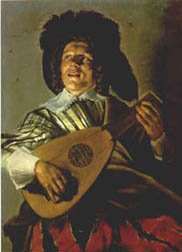
Judith Leyster, Serenade
|
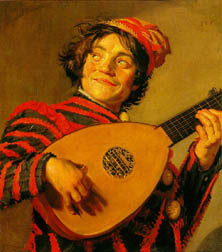
Frans Hals, Jester with
Lute
|
|